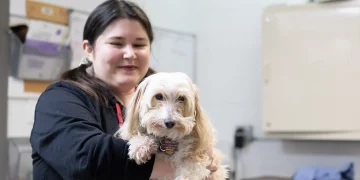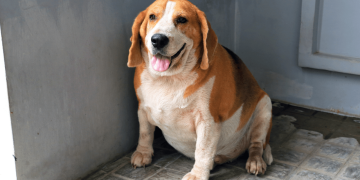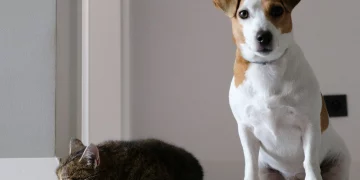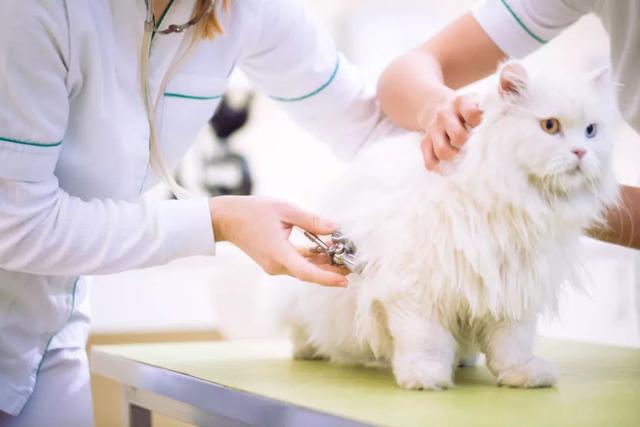Long-haired cats are known for their luxurious, flowing coats that require extra care and attention. While they may look beautiful and elegant, their fur can quickly become tangled, matted, or dirty if not properly maintained. Regular grooming is essential not only for aesthetic reasons but also for your cat’s health and comfort.
In this article, we will discuss why long-haired cats need frequent grooming, the importance of regular brushing, and tips on how to prevent mats and tangles from forming.
Why Long-Haired Cats Need Frequent Grooming
Long-haired cats, such as Persians, Maine Coons, Ragdolls, and Himalayans, have thick and dense coats that grow longer than those of short-haired cats. While their long fur can be stunning, it requires much more maintenance and attention. Here’s why grooming is so important for long-haired cats:
1. Preventing Mats and Tangles
One of the biggest challenges with long-haired cats is the formation of mats and tangles. Mats are clumps of fur that have knotted together and can become tightly woven, pulling at your cat’s skin. Over time, mats can lead to discomfort, skin irritation, and even infections if left untreated. Frequent brushing helps prevent these issues by keeping the fur untangled and smooth.
2. Reducing Shedding
Long-haired cats shed more than their short-haired counterparts, and their shedding is often more noticeable. Regular brushing helps remove loose hair before it ends up on your furniture, clothes, or floors. By brushing your cat regularly, you also reduce the likelihood of hairballs, which occur when a cat swallows loose fur while grooming.
3. Maintaining Coat Health
Brushing not only removes dead hair but also helps distribute natural oils throughout your cat’s fur. These oils are important for maintaining a healthy, shiny coat. When you brush your cat, you promote better blood circulation to the skin, which can result in a healthier, more vibrant coat.
4. Preventing Skin Issues
Long fur can trap dirt, debris, and moisture against the skin, potentially leading to skin infections or irritations. Regular grooming allows you to check your cat’s skin for any issues like sores, scabs, or parasites. It also helps to prevent urine, feces, or other contaminants from getting stuck in the fur, which could cause health problems.
How Often Should You Groom Your Long-Haired Cat?
The frequency of grooming depends on the length, thickness, and texture of your cat’s coat. Generally, long-haired cats need to be groomed more often than short-haired cats.
Daily Brushing for Some Cats
Cats with very long or dense coats, such as Persians or Ragdolls, benefit from daily brushing. These breeds tend to develop mats and tangles quickly, so brushing every day helps keep their coats in top condition. It also gives you a chance to check for skin irritations, fleas, or other issues that might be hidden beneath the fur.
Every 2-3 Days for Others
For cats with less dense coats or slightly shorter long hair, grooming may only be needed every 2-3 days. However, if your cat is prone to tangles or mats, more frequent brushing might still be necessary.
Once a Week
Some long-haired cats that are less prone to matting or tangling might only need weekly grooming. These cats tend to have thinner coats that are less likely to form mats, but regular brushing is still important to remove shedding hair and distribute oils.
How to Groom Your Long-Haired Cat
Now that you know how often to groom your long-haired cat, it’s time to discuss how to do it effectively and safely. Here’s a step-by-step guide to help you get started with grooming:
1. Choose the Right Tools
Having the right grooming tools is essential to make the process easier and more effective. Here are some key tools you’ll need:
- Wide-toothed Comb: Ideal for untangling any large mats or knots. It’s gentle on the fur and prevents pulling.
- Slicker Brush: Perfect for removing tangles and loose fur, especially in dense or thick coats. The fine, wire bristles help to smooth out mats and prevent them from forming.
- Pin Brush: A good tool for brushing through longer hair without causing breakage or discomfort. It’s great for fluffing up the coat and adding volume.
- Dematting Comb: If your cat has mats that are hard to remove with a regular brush, a dematting comb can help you gently break them apart. However, be careful not to tug too hard, as this could cause pain or injury.
- Nail Clippers: Grooming isn’t just about brushing! Regularly trim your cat’s nails as part of the grooming routine.
- Cat-Specific Shampoo and Conditioner: If you plan to bathe your cat (which is generally not necessary unless they’re very dirty), use cat-safe shampoo and conditioner to avoid irritating their skin.
2. Start Slowly
If your cat isn’t used to being groomed, don’t rush the process. Start by getting them comfortable with the grooming tools and creating a calm, relaxed environment. Here are a few tips:
- Pick a Quiet Spot: Choose a quiet place free from distractions where your cat can feel safe and calm.
- Use Positive Reinforcement: Offer treats and praise when your cat stays still during grooming. This will help them associate grooming with positive experiences.
- Short Sessions: If your cat is new to grooming or very sensitive, start with short grooming sessions (around 5-10 minutes) and gradually increase the length as they become more comfortable.
3. Brush in Sections
When brushing, work in small sections to prevent tangles from worsening. Use your fingers to gently separate the fur and expose any mats before carefully brushing through them. Be gentle and patient, as pulling on mats can be painful for your cat. If you encounter a particularly stubborn mat, try to use a dematting comb or your fingers to gently work it out.
- Under the Armpits and Belly: These areas tend to mat more frequently, so pay extra attention to them.
- Tail and Back Legs: The tail and back legs of long-haired cats can easily become matted if not properly groomed. Make sure to brush through these areas thoroughly.
4. Be Gentle with Sensitive Areas
Certain parts of your cat’s body, such as the belly, paws, and behind the ears, are more sensitive. Be particularly gentle when brushing these areas to avoid causing discomfort. If your cat doesn’t like being touched in certain spots, take it slow and offer treats or affection to make the experience more positive.
5. Regularly Check for Mats and Tangles
As you brush, keep an eye out for any mats or tangles that might be starting to form. If you find a mat, try to gently loosen it with your fingers or a wide-toothed comb before using a dematting tool or brush. Never pull too hard on mats, as this can cause pain and damage your cat’s fur. If the mats are too tight or painful to remove at home, consult your vet or a professional groomer.
6. Bathing Your Cat (If Necessary)
Long-haired cats typically do not need frequent baths, but occasionally, they may need a good bath if they’ve gotten particularly dirty or oily. Use cat-specific shampoos that are gentle on their skin. Avoid human shampoos, as they can irritate your cat’s skin.
- Drying: After the bath, dry your cat gently with a towel and avoid using a blow dryer unless your cat is comfortable with it. Some long-haired cats may require a blow dryer on a low, cool setting to prevent their coat from matting.

How to Prevent Mats and Tangles
Preventing mats and tangles is a critical part of grooming long-haired cats. Here are some strategies to help reduce the likelihood of matting:
1. Regular Brushing
The best way to prevent tangles and mats is to brush your cat frequently. As mentioned earlier, long-haired cats should be brushed at least every 2-3 days, with daily brushing being ideal for some breeds. Regular brushing removes loose hair and helps prevent tangles before they form.
2. Keep Your Cat’s Coat Moisturized
Dry fur is more prone to tangling. Keeping your cat’s coat healthy and moisturized can help prevent mats. You can use a cat-safe leave-in conditioner or spray to keep the fur soft and smooth. Make sure to use products designed specifically for cats, as human products can irritate their skin.
3. Trim Excess Hair
If you notice that certain areas of your cat’s coat are prone to tangling, consider having the hair trimmed slightly. Trimming the fur around the ears, under the armpits, and on the belly can reduce the risk of mats forming in those high-friction areas.
4. Bathe Your Cat Occasionally
Although cats are generally good at grooming themselves, a bath every few months can help keep their coat clean and free from oils and dirt that might contribute to tangling. Always use cat-safe shampoo and conditioner.
Conclusion
Long-haired cats require a little more attention when it comes to grooming, but with the right tools, techniques, and care, you can keep their coats looking beautiful and healthy. Regular brushing is essential to prevent tangles and mats, promote coat health, and ensure your cat’s comfort. By following these tips and making grooming a positive experience, you can help your long-haired cat maintain a soft, shiny, and tangle-free coat for years to come.























































